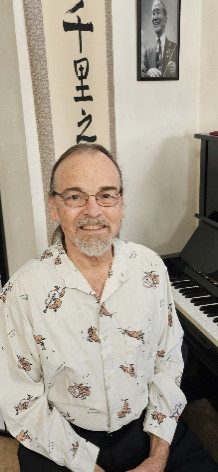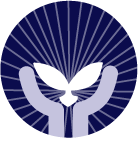Ken Trautman

After returning from Matsumoto in 1987, I established a home studio in Pittsburgh, joined the Talent Education of Greater Pittsburgh Organization, and taught at workshops in various locations in the US. I taught at Duquesne University City Music Center and developed the Suzuki piano program at the Center for Young Musicians. Additionally, I accompanied Suzuki violin teachers and students at many locations in Pittsburgh. In August 1991, I was the director of the International Suzuki Piano Basics Workshop at Chatham College with Kataoka-sensei. In November 1991, I moved to my current location and established a two-piano studio where I still provide individual and group lessons. Concurrently, I have provided organ and piano music at different churches since 1996. I am Co-Music Director of the Suzuki Association of Pittsburgh with Pat Pavlak where we plan at least six concerts each year which may include a five-piano concert.
Instruments studied in Japan: I studied piano with Dr. Kataoka and violin as a parent with Ms. Mori from November 1985 to July 1987.
Dates in Japan: November 1985 to July 1987.
Years and locations of workshops with Dr. Suzuki or Dr. Kataoka that were outside of Japan:
- I studied with Kataoka in Stevens Point twice before going to Japan.
- After returning to the USA, I saw Kataoka nearly every year at week-long workshops--Tampa, Atlanta, Louisville, Rochester, and Philadelphia.
- I brought Dr. Kataoka to Pittsburgh for the Suzuki Piano Basics workshop August 5-9, 1991.
- I saw Dr. Suzuki again in Chicago at the National Teachers Conference and in San Francisco.
Memories
Ken Trautman’s Suzuki Experience
I first learned about the Suzuki Method when I took a semester course in it at Eckerd College in 1974. William and Constance Starr came for a week, and I was very impressed. I wasn’t inclined to be a teacher, but thought if I ever did, that would be the way to go. Bruce Anderson, a fellow organ student, graduated a year before I and went to Japan to study violin with Suzuki-sensei and Mori-sensei and piano with Kataoka-sensei. By the time he returned from Japan, my wife and I had a three-year-old daughter that we had taken to a Suzuki violin concert where she said, “I want to do that!” I was accompanying the Suzuki violin students and the teacher said I should get training to teach.
When I heard that Bruce had returned from Japan, I became his first teacher trainee, and continued studying with him as I started teaching and attending summer workshops with Kataoka-sensei. Our family drove from St. Petersburg, Florida to Steven’s Point, Wisconsin for the American Suzuki Institute where we could see Dr. Suzuki. We all still remember the effect of seeing and hearing hundreds of children playing violin together in the gym. Bruce continued to encourage us to study in Japan. We sold our house and moved to Japan, not knowing how long we would be able to be there. Looking back on my life now, I can see I’ve always been someone who will take a chance and see what happens.
Bringing our seven-year-old daughter to Japan was a definite plus. She was the only foreigner in the local school and became conversant in six months. It was through her school friends and their mothers that we could learn how it was to live in Japan, following all the social events throughout the year. Memories of New Year’s celebrations in the street and at the shrine, picnics in the mountain park at Cherry Blossom time, dancing in the Matsumoto Bon-Bon Matsuri and hiking and skiing in the Japan Alps. Another plus for having our violin student daughter with us was being a Suzuki parent as well as a student and teacher. All the people we met were so kind to us foreigners. The friends we made, with some of whom we are still in contact, would take us to outdoor onsen in the mountains, or the sculpture garden museum on the plateau above Matsumoto, where one could see Mt. Fuji on a clear day, or to pound rice to make mochi. Our daughter’s first grade teacher took us to observe a master archer as he practiced. In addition to being in school and having violin lessons, she was able to study green tea ceremony and aikido. It seemed everyone wanted us to know Japan. We loved it.
Observing lessons was the best part of study. Of course, seeing Kataoka-sensei teaching so many students at all levels was valuable for my teaching. Luckily, I could understand the teaching without knowing all the language. Observing other kenkyusei at our lessons was great because we could always see other’s mistakes easier than our own and then apply what we saw to ourselves. (I put a mirror in my practice room so I could see what I was doing.)
Before going to Japan, I had no idea of being in a weekly calligraphy class. I never was good at any visual arts but appreciated them. “Ability develops according to the law of ability.” The more you do, the more you can do. The class was taught by Dr. Suzuki’s teacher (so she had to be as old as he was) who only spoke Japanese. Being in the class was fun because I could sit next to many long-term kenkyusei and meet them. Starting from knowing nothing, I learned little by little the art, and it helped me to appreciate a serious part of Japanese culture. Preparing to paint my shuji to be hung at my graduation concert was the same as for the piano performance. I only had one chance to make each brush stroke. Suzuki said he liked it. It hangs in my studio. What it says is from the Tao Te Ching. Its usual translation is: “A journey of a thousand miles begins with the first step.”
I made sure to be at Takahashi-sensei’s weekly lessons for the entire school. They were based on what he learned from Marcel Moyse on making melody sing and be expressive. Even though I played piano and couldn’t participate, I learned more about these things than anywhere else.
Some great memories that related to the study involved accompanying Australian violin students for the Summer School Concert, participating in the first five-piano concert and then the first ten-piano concert, seeing 13-year-old Kissin and Vladimir Spivakov play at the Kaikan, and being there for Dr. Suzuki’s 88th birthday celebration! It was great to meet all the other teachers who would come from all over the world.
“Listen to your tone.” Every morning at the Kaikan started with snacks for everybody before the group lesson for all the string kenkyusei. The other kenkyusei (piano/flute) could observe the group lesson. This is where I observed his teaching. They always started with Judas Maccabeus. Sometimes he would play the opening phrase, then one by one each would play it back. So many times, I would hear him say, “Listen to your tone,” and then show how to adjust the bowing. One of Suzuki-sensei’s sayings, “Utsukushiki oto o, utsukushiki kokoro o,” is often translated, “Wish for beautiful sound, for beautiful heart.” A beautiful tone and a beautiful heart are coming from somewhere…where? By searching to make something beautiful, the person’s heart and soul is more beautiful. Dr. Suzuki himself was listening for a more beautiful tone each time he played. My goal as a teacher is to have every student learn to listen for beauty and have a desire and ability to produce it.
Thank you for asking for some memories of Saino Kyoiku Kaikan. I'm glad to share them with anyone interested. Once I started, more and more came back. There is more to each memory I shared…
"Listen to Your Tone" is the most essential part.
Photos in Matsumoto


